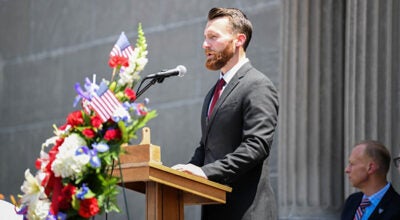Student success should guide all school improvement decisions
Published 10:56 pm Wednesday, August 15, 2012
To the editor:
Some thoughts about the school vote.
A healthy democracy is not just people voting, it’s a well informed citizenry participating in the process and also voting.
A school system’s primary responsibility is student success; this should guide all decisions to improve our school system.
The decision to build a new school may have been made by a few people who were more interested in attracting business to the town than they were interested in student success.
A comprehensive, coordinated problem solving process with community participation, and full disclosure to non-participants is required. This is hard work but we’re thinking about spending a lot of money here.
Identify problems with the school system
What are the symptoms of each problem, how is it related to student success?
Is the problem due to internal factors or forces outside the system?
What are the root causes of each problem? There are root cause analysis tools that can help with this. Plot each problem on a grid with importance to student success on one scale and economic impact on the other, resulting in expensive problems with high importance, expensive problems with lower importance (skip these), cheaper problems with high importance (attack these first) and cheaper problems with lower importance.
Decide which problems to address, and prioritize.
Analyze the current system; you can’t fix what you don’t understand.
Study policy, procedures and work flow. Such as, is the K-12 grade system appropriate for our students? How many times do our students change buildings? How much time do students spend in travel to and from school? What are our class sizes? How much parent involvement do we have? The list is long.
Calculate the total cost of ownership of all assets; buses, classroom equipment, buildings, everything, including Chris Taylor-Alumni Field.
Apply the old DIRTI Formula. Each asset must be worth the cost of Depreciation, Insurance, Repairs, Taxes and Interest on Investment.
For schools, taxes require some thought because schools don’t pay taxes but voters do, so owning an asset adds to taxpayer burden. Schools also might want to think of interest as opportunity cost (what else could I do if I sold this asset?)
Add Energy to the old DIRTI Formula. In today’s world, the carbon footprint of an asset is very important. Many of the school system’s assets were purchased when electricity was three cents a kilowatt and bus fuel was $1/gallon.
Perform an asset utilization study. How much are we spending on each asset, and how is this money contributing to student success?
Study the people; include administration, instruction and support staff.
What barriers prevent them from promoting student success?
Are any of these people a student success barrier?
Design a new system
Make changes to policy, procedures and work flow. Base these changes on reliable research. Consider things such as neighborhood vs. centralized buildings, class size, graded vs. non-graded, etc. Leave no stone unturned.
As a wise man once said, “Think beyond your experience, plan beyond your tenure.”
Stay focused on the problems identified above; don’t get distracted and include extra stuff.
Decide which assets to keep, which to sell and what to buy. Remember DIRTI and carbon footprints. Many of these assets could last long enough to see electricity and gasoline at much higher prices.
Again, stick to solving the identified problems.
Think about how each asset will promote student success. Is it worth the cost?
Make people changes if necessary. Always keep your primary goals in mind.
This problem solving study needs to involve a diversified group of community members and be led by a trained project manager with no conflict of interest. If you let architects and contractors do this analysis, a new building will be the solution.
Abraham Maslow stated, “If the only tool in your tool box is a hammer, all problems look like nails.”
If citizens representing all economic and cultural backgrounds are involved and/or well-informed while the problem solving analysis is completed, and the solutions aren’t tainted by special interests, then the people will feel ownership of the solution and vote for it. We’ve been through this too many times. Remember what AlbertEinstein said, “Insanity is doing the same thing over and over again and expecting different results.”
Harold Grabemeyer
Dowagiac





